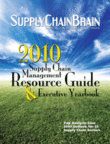
Visit Our Sponsors |
|
|
|
|
|
|
|
|
|
|
|
|
|
|
|
|
|
|
|
|
|
|
|
|
|
|
|
|
|
|
|
|
|
|
|
|
|
|

AMR Research finds supply chain processes have traditionally focused on efficient transactions or the order-to-cash segment. That includes the order, ASN, invoice and payment, but does not include the relationship aspects of forecast, demand, inventory, performance, specifications, and scorecards. Leaders segment their supply base by category, strategic positioning, relationship and attractiveness to the business, and by regional or division scope. Segmentation provides a vehicle to look at suppliers from a transactional, integrated or collaborative view point. Each segmented view provides value to your organization, but SRM is clearer once the total volume and value placed on the relationships is understood.
Leaders quickly move their order-to-cash suppliers to the most efficient model possible, spending more time focusing on their integrated and collaborative suppliers. The former are fully integrated functionally across the organization, designing and customizing for specific products, while also focused on lead-time reductions and more value. Integrated suppliers typically co-develop products. Collaborative suppliers design when asked and an opportunity is identified.
Critical to SRM is an environment of open innovation and communication closeness. And in tough economic times, supplier relationship management becomes even more critical. AMR found many organizations closely monitored their top suppliers' financial and manufacturing elements. Moreover, their supplier's top supplier was monitored. One automotive industry company noted that if a supplier were in trouble, a team approach tried to ensure success so the entire value chain would not suffer.
The Outlook
In 2010, expect supplier segmentation to continue as companies look for easier mechanisms for supplier relationship management. In addition, technology will play a critical role in monitoring suppliers, as well as in collaboration of critical communication points. AMR Research expects suppliers to be connected electronically for transactional processing; strategic supplier communications to be streamlined into fewer forms of communication vs. many vehicles utilized in 2009; integrated and collaborative suppliers will drive cost efficiencies in communication; B2B managed services to continue to fulfill supplier relationship communication vehicles; and supplier trust to be improved with fewer communication vehicles.
In 2010, SRM will change from purely transactional to a relationship automated for efficiencies and to improve trust.
RELATED CONTENT
RELATED VIDEOS
Timely, incisive articles delivered directly to your inbox.

